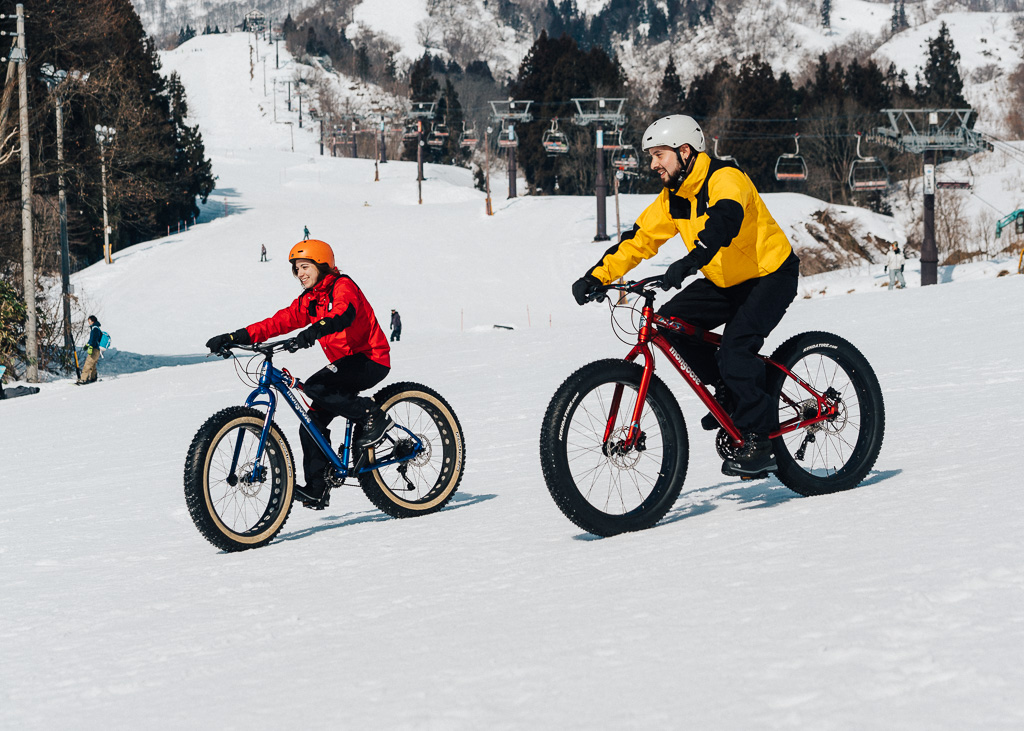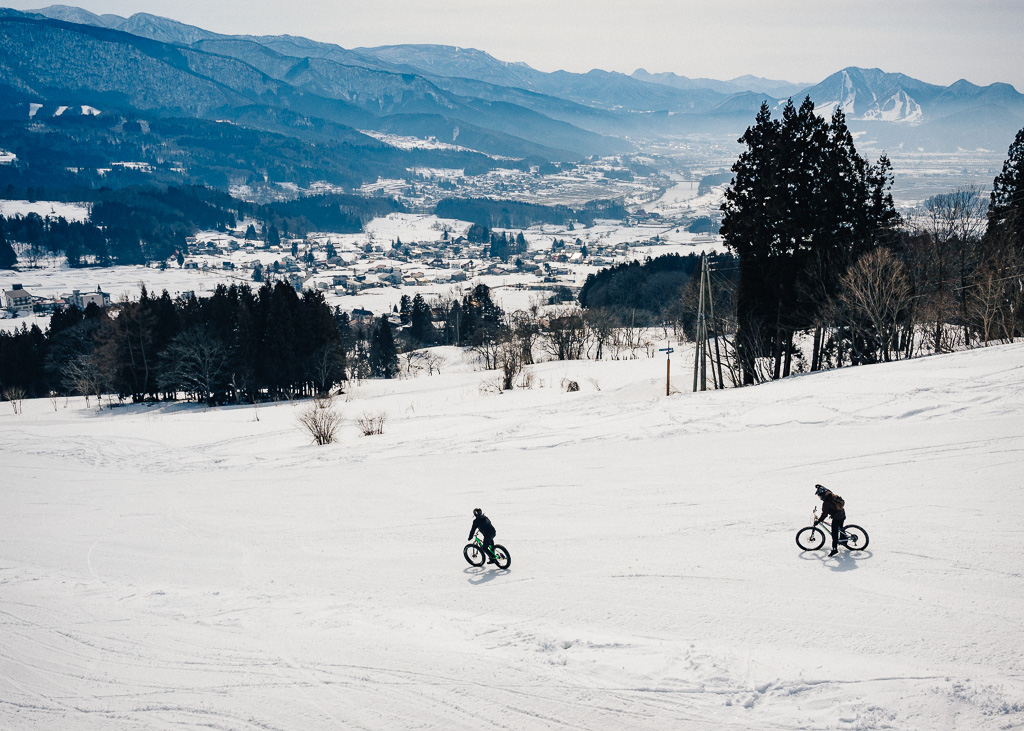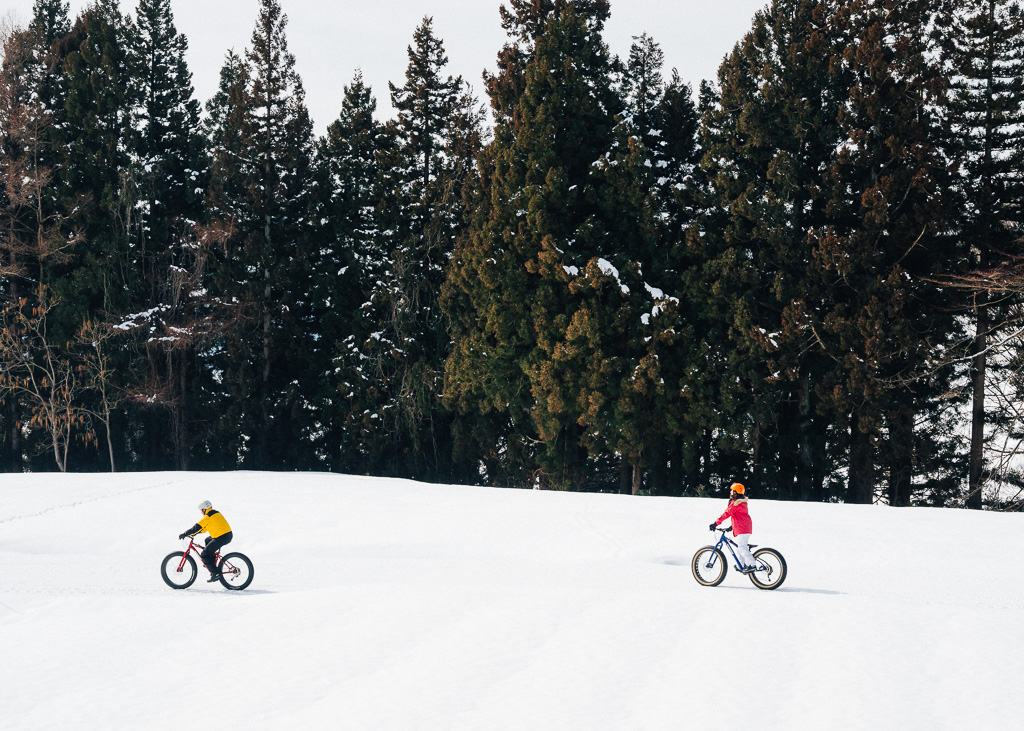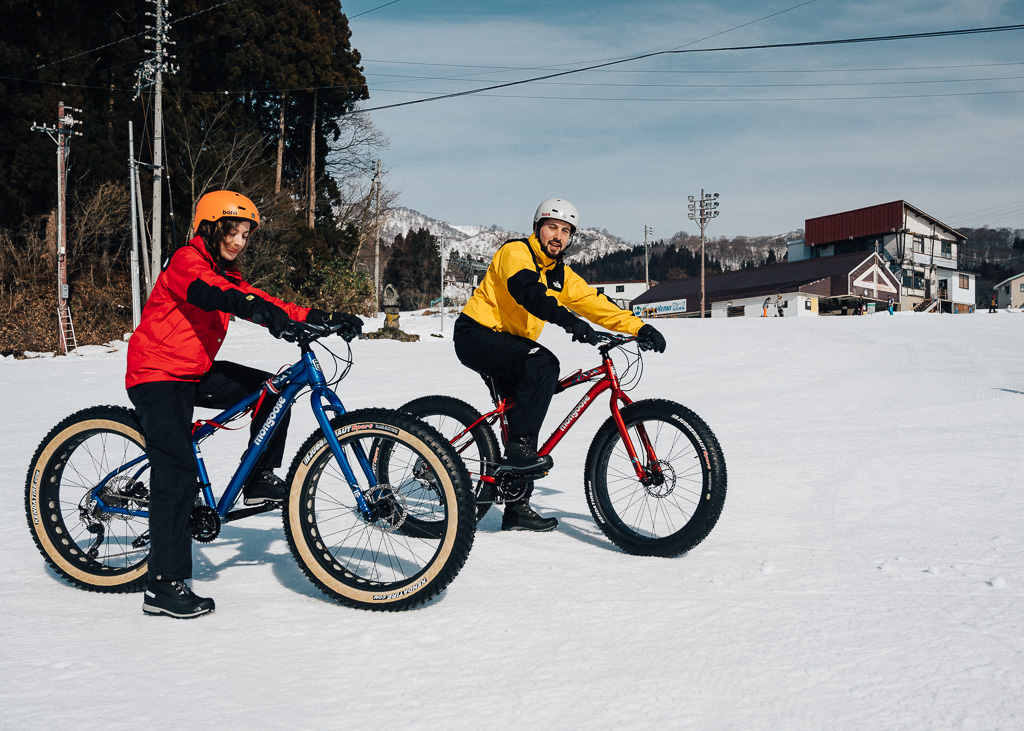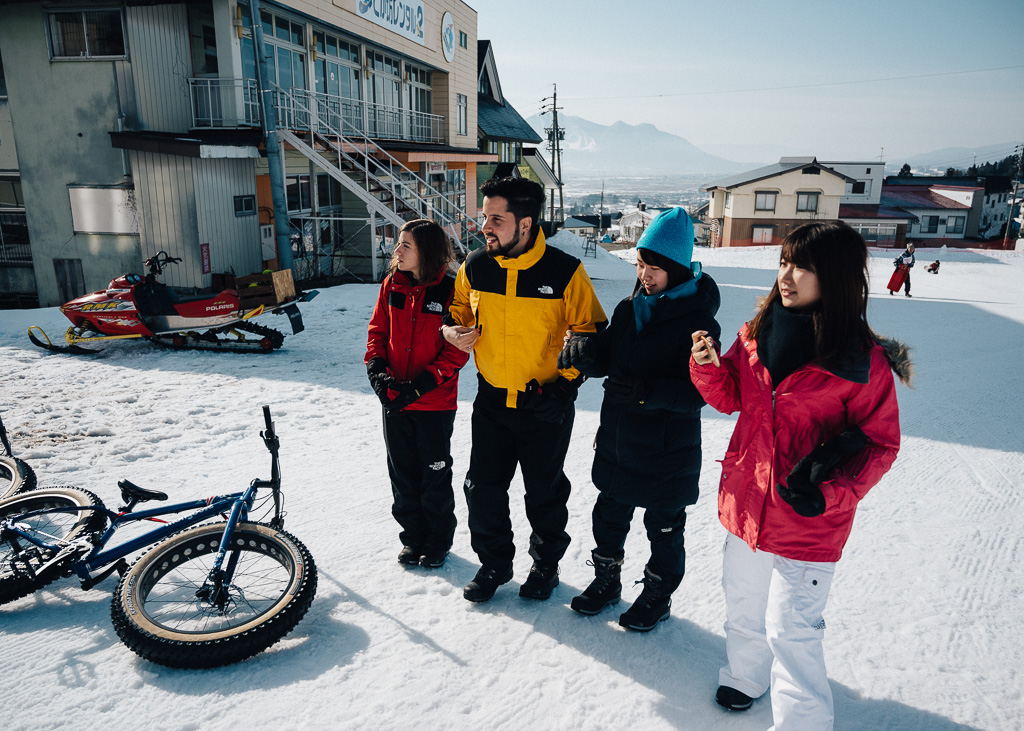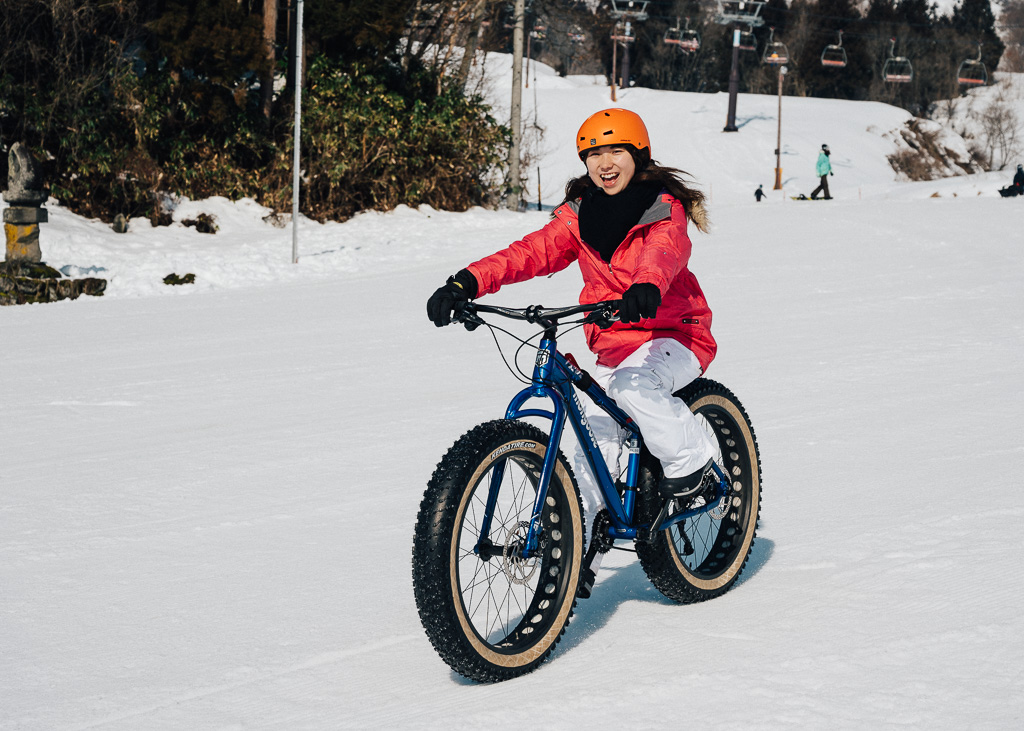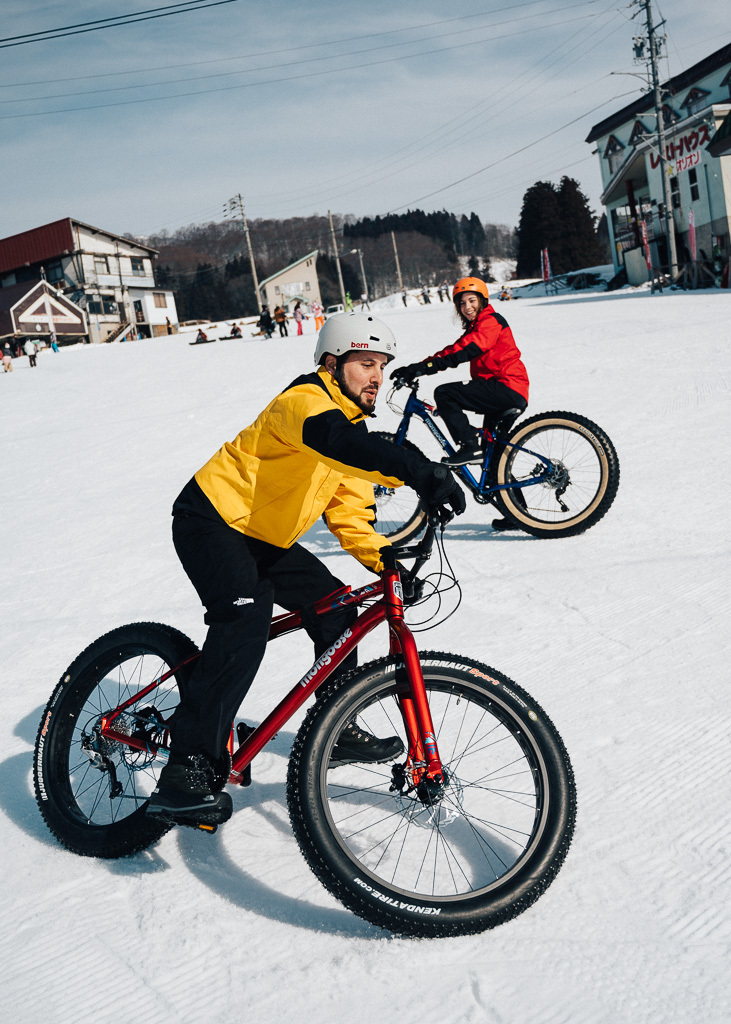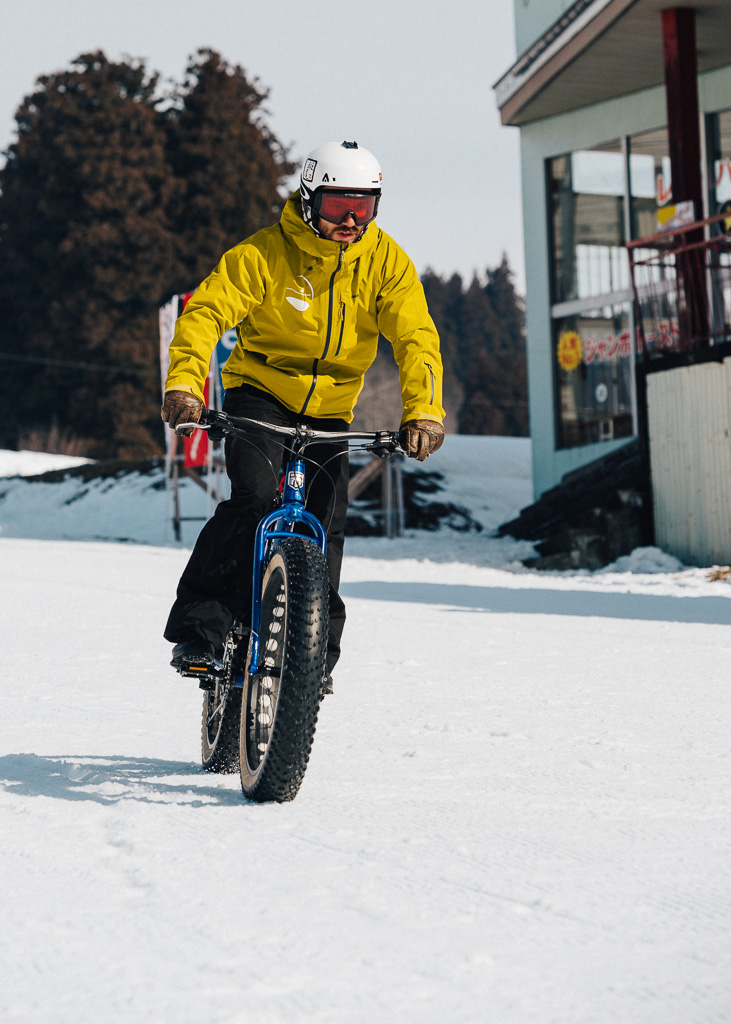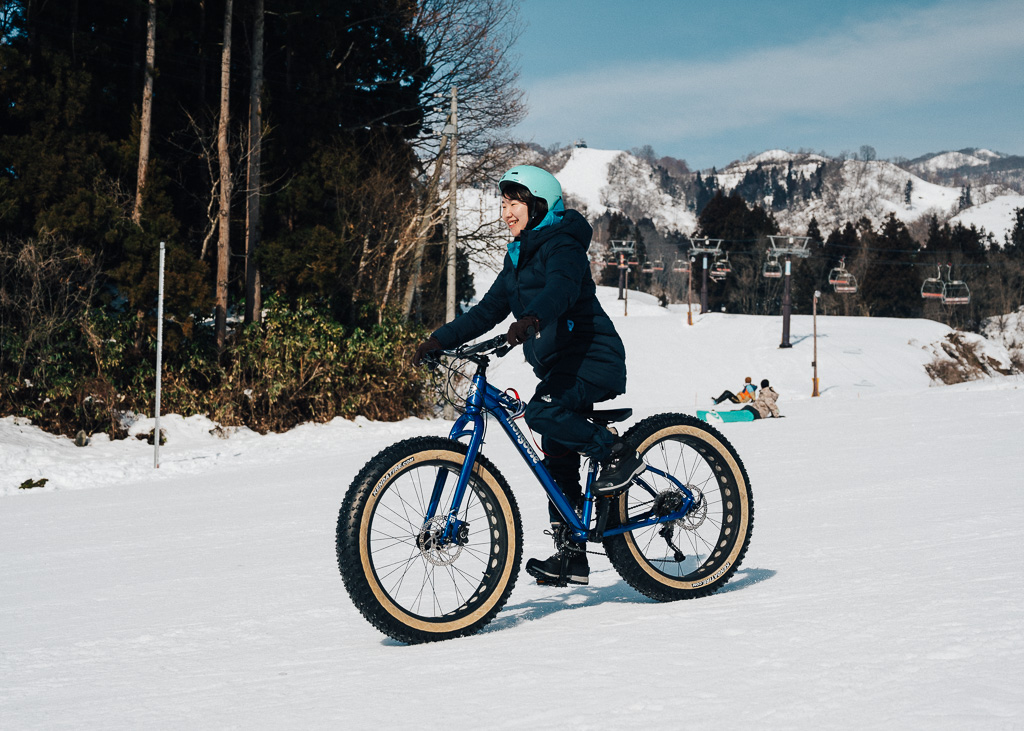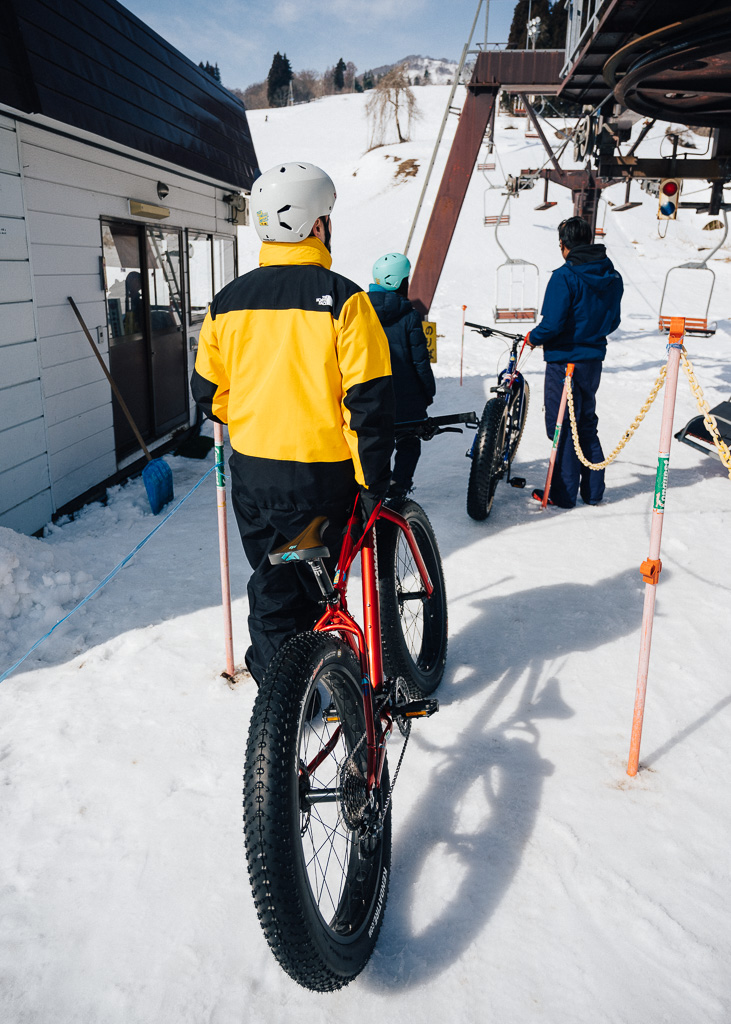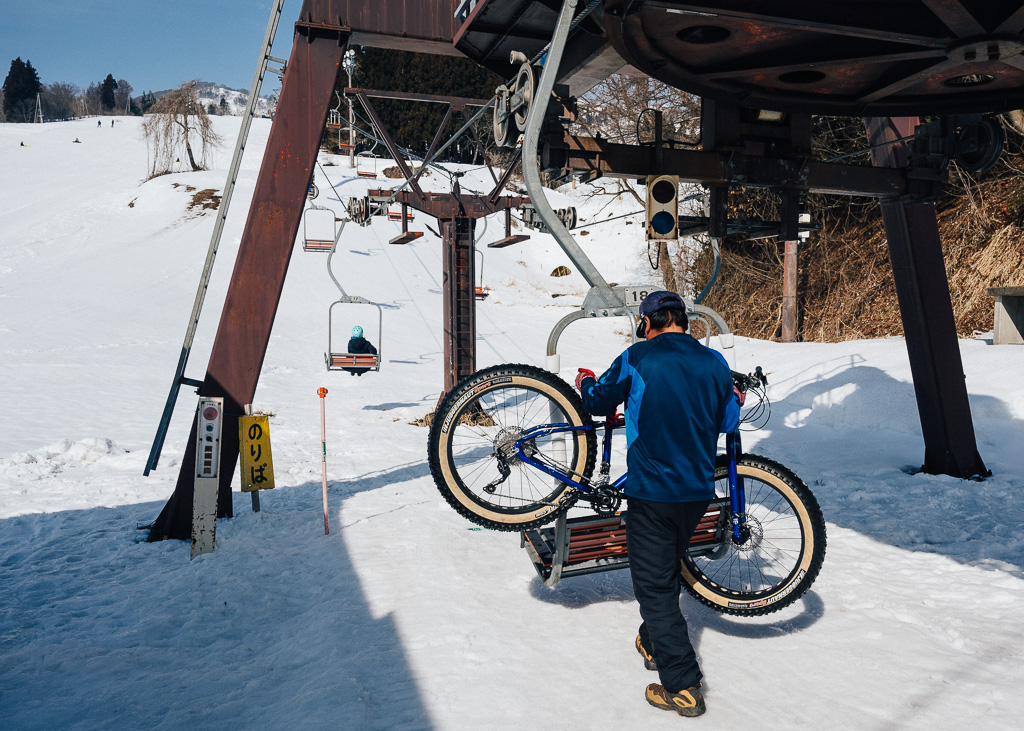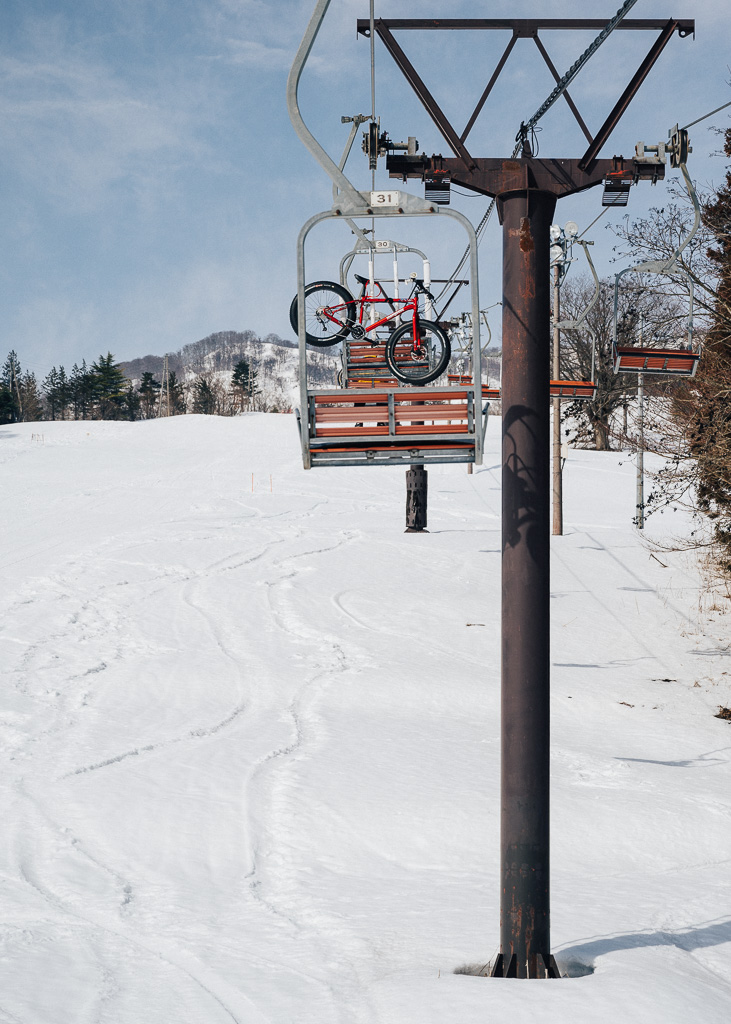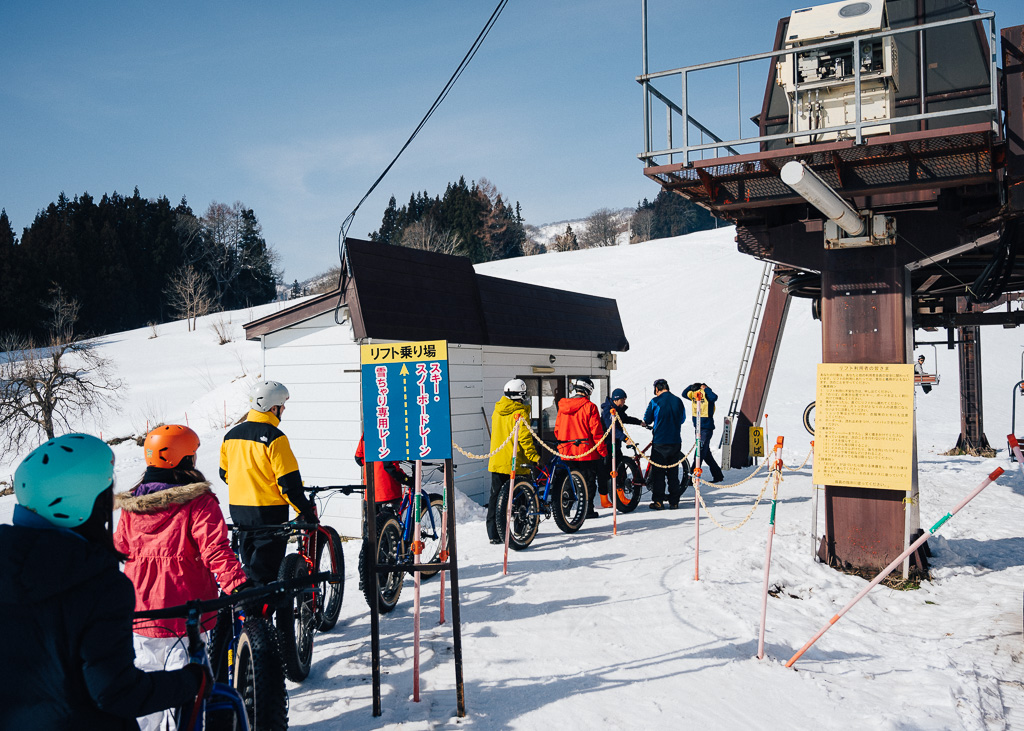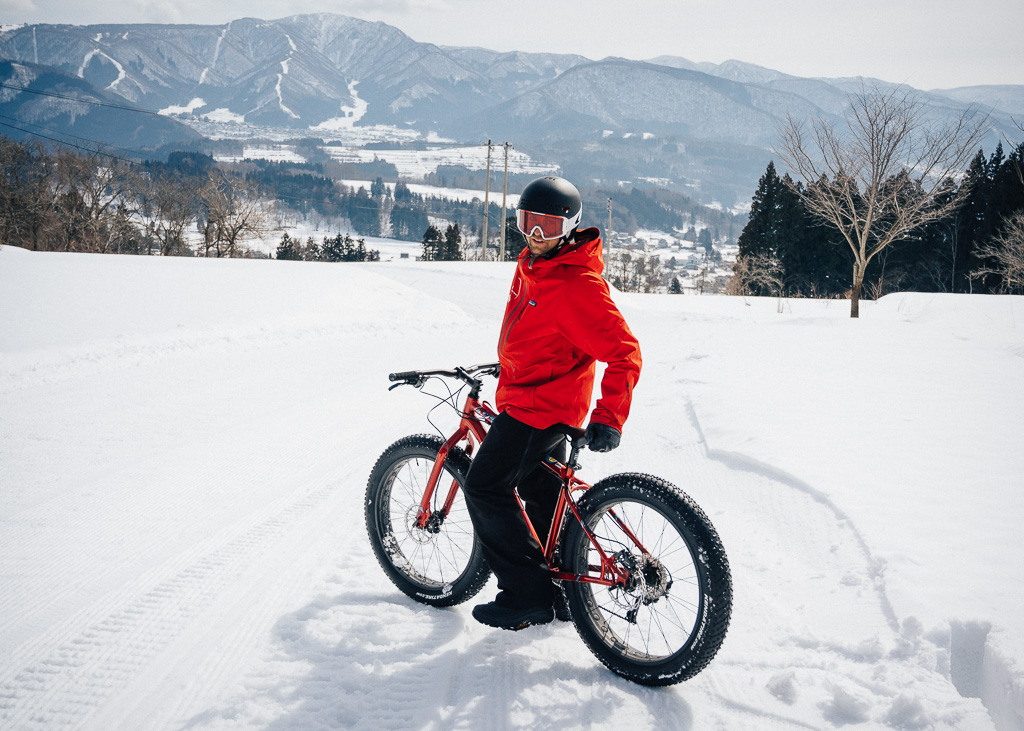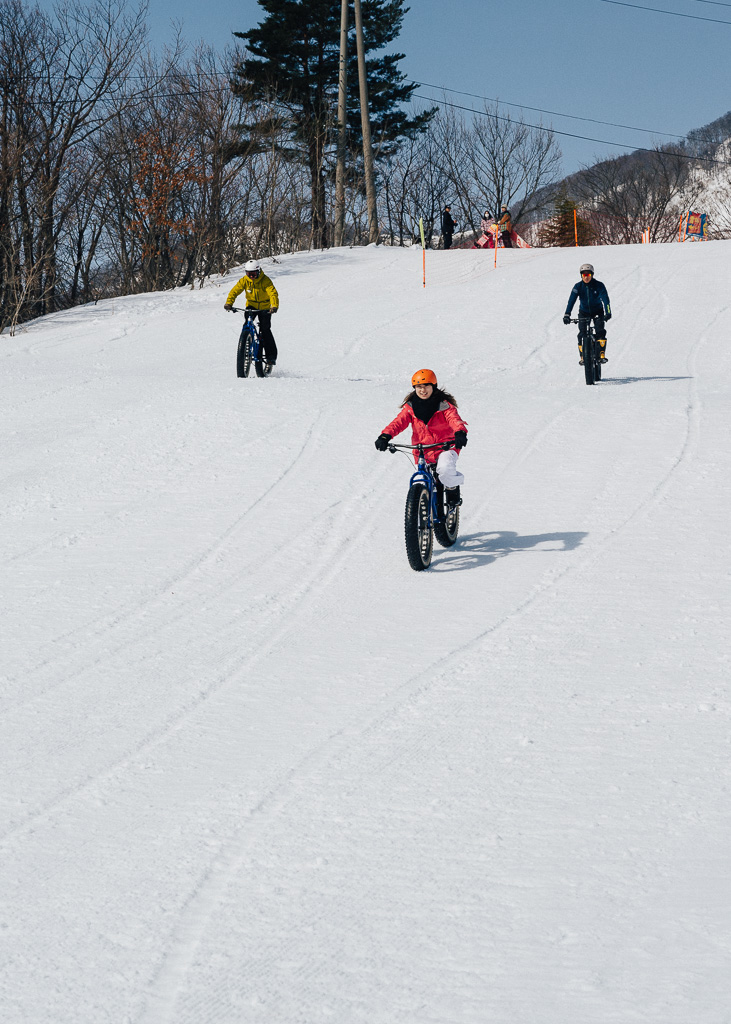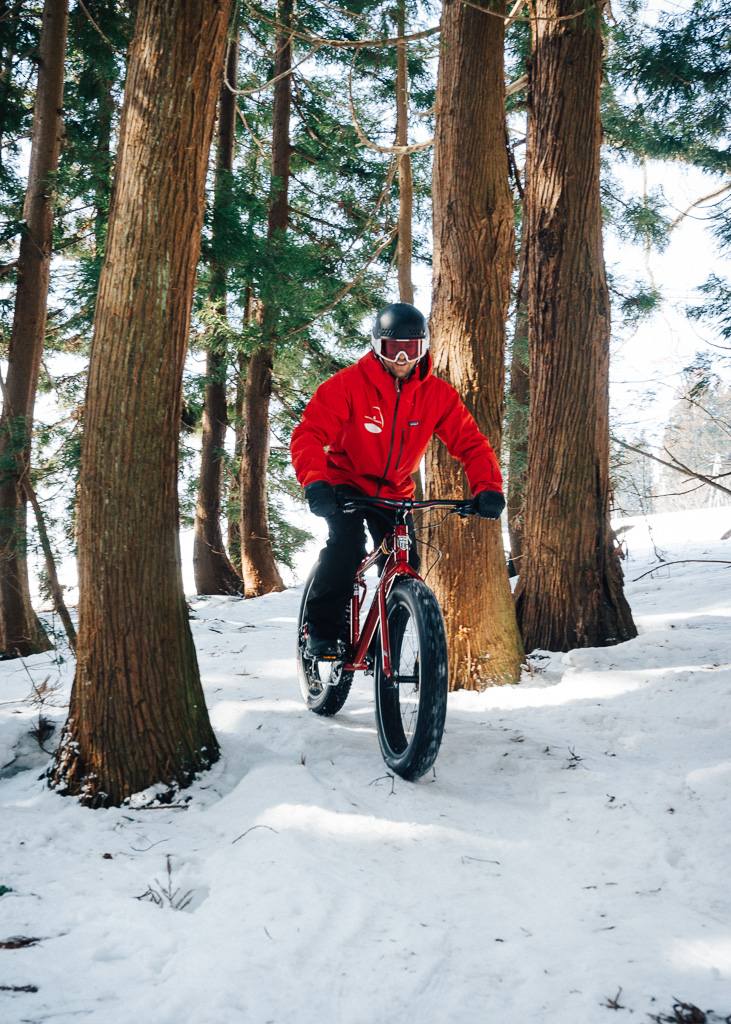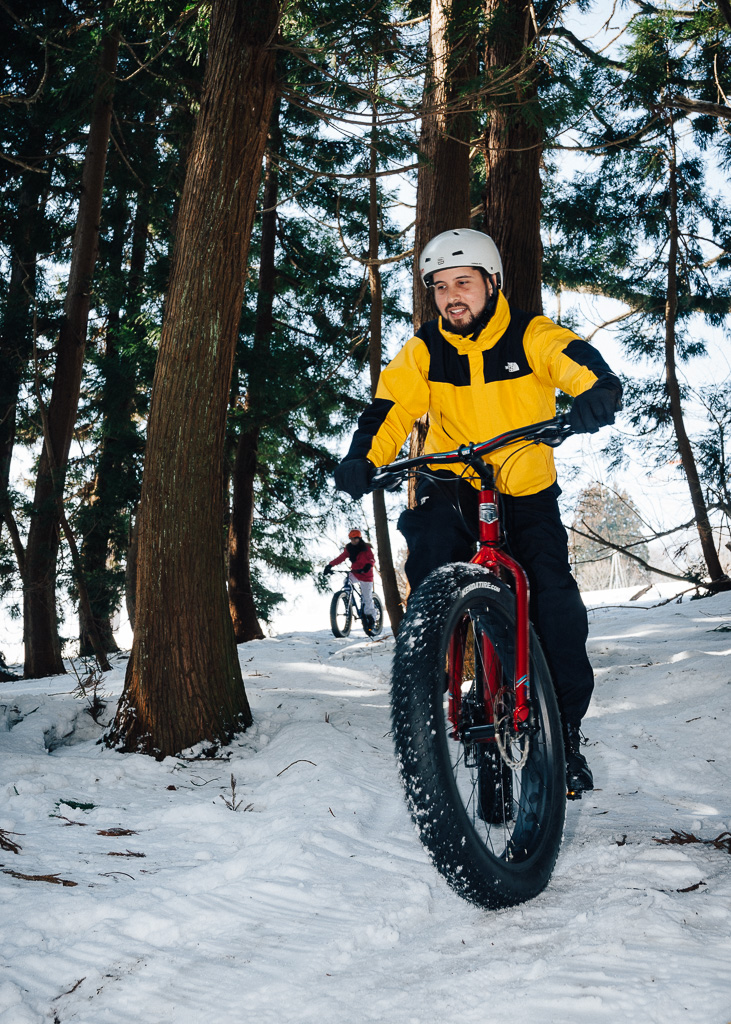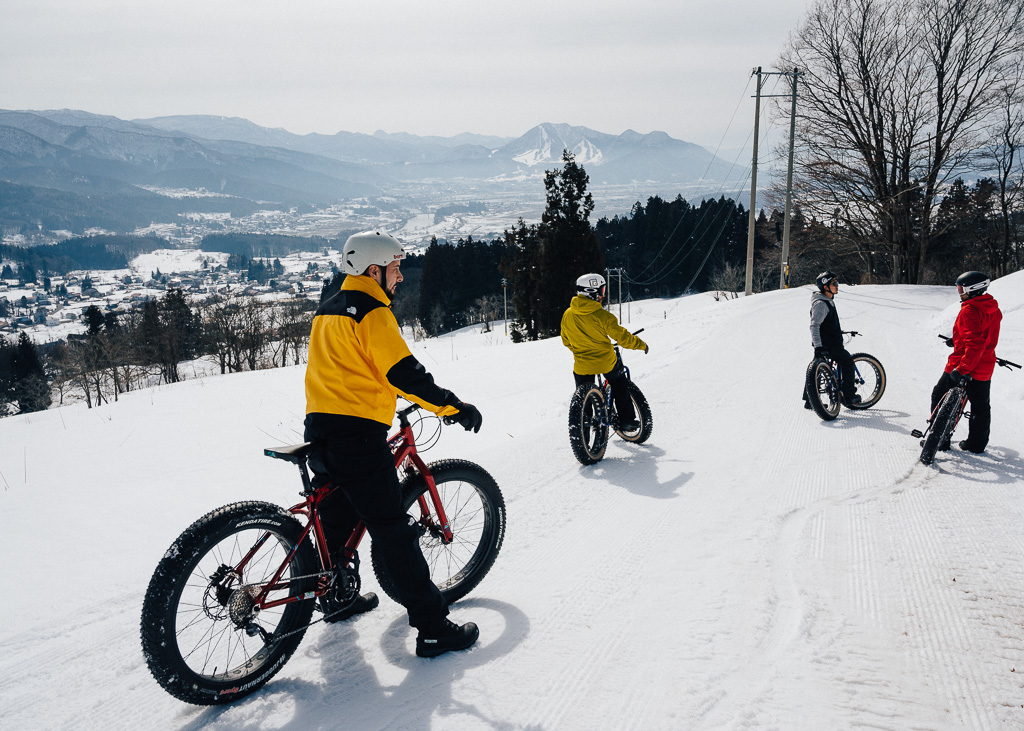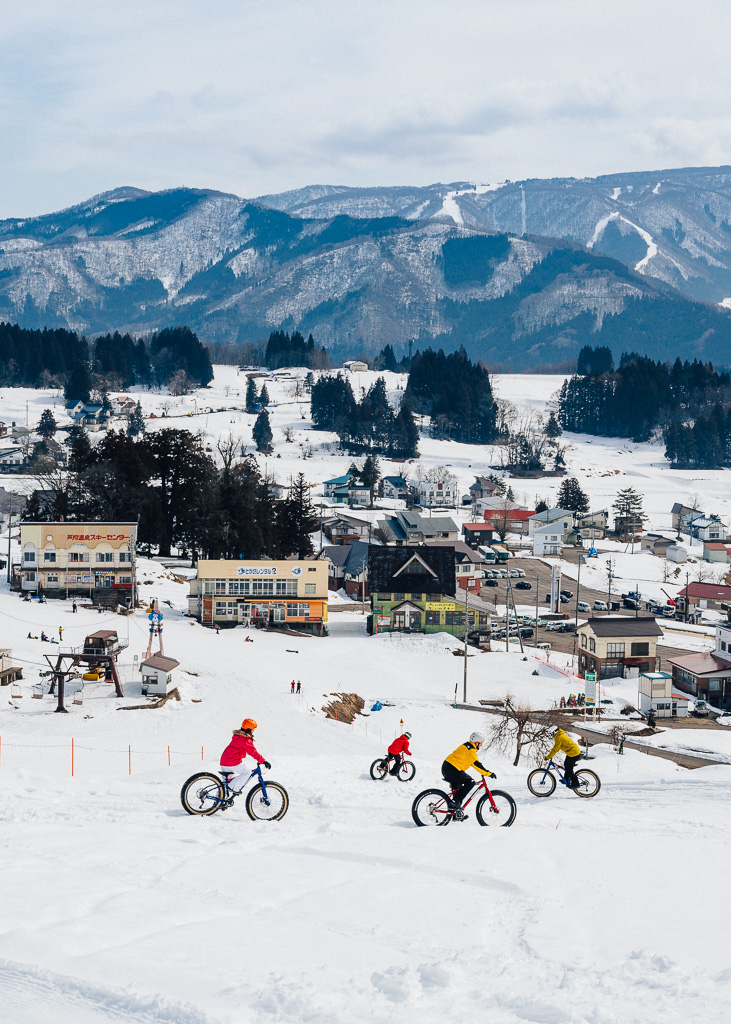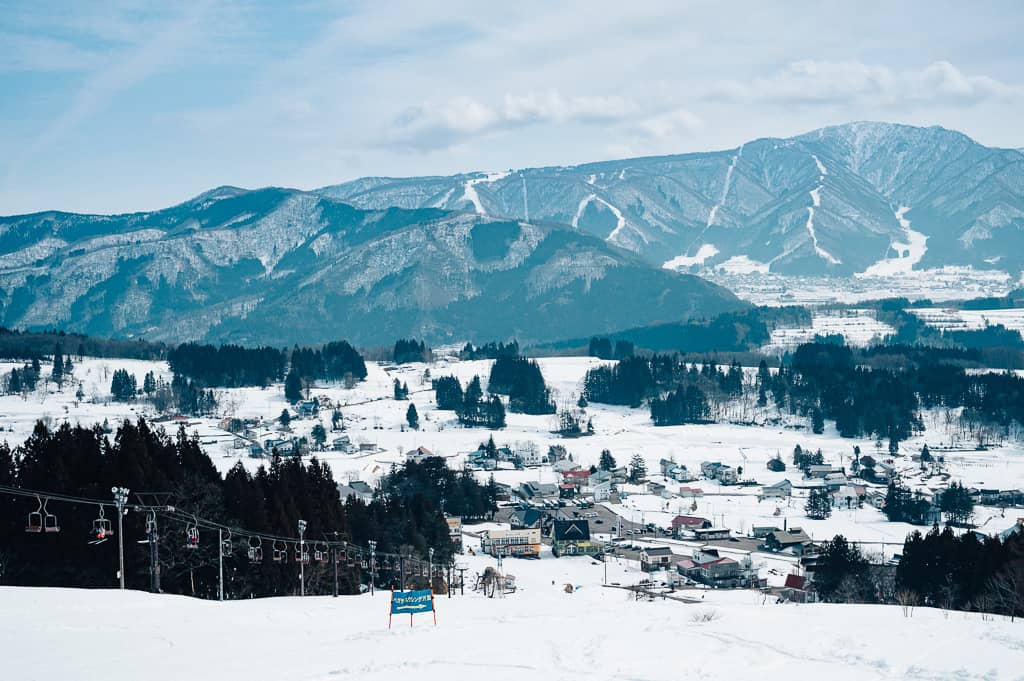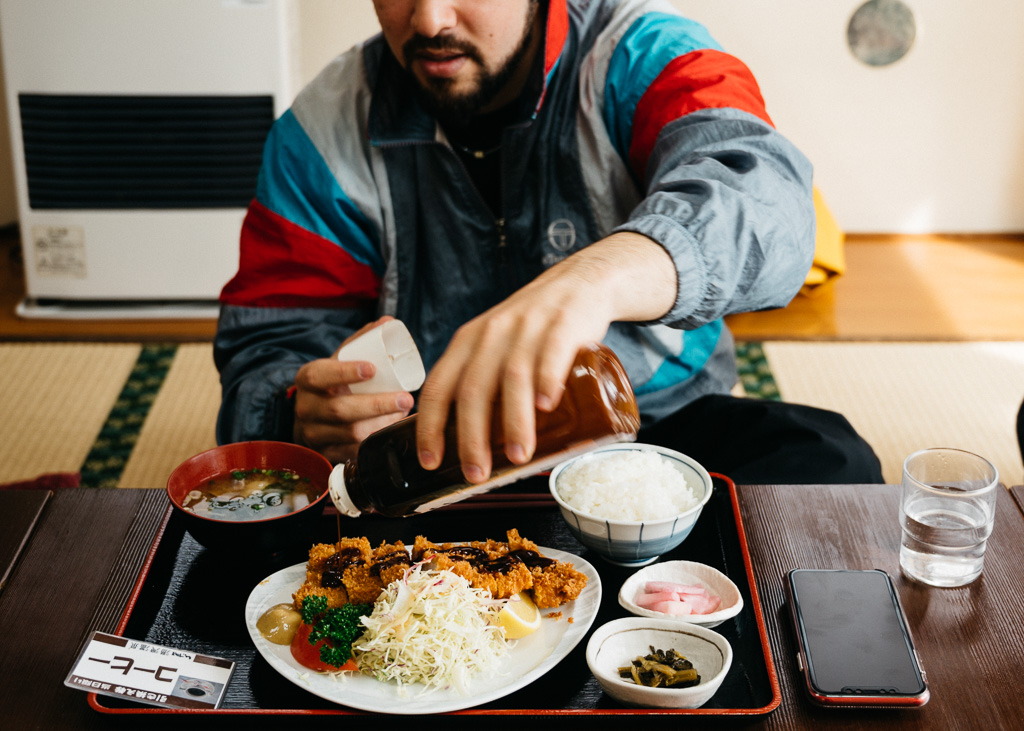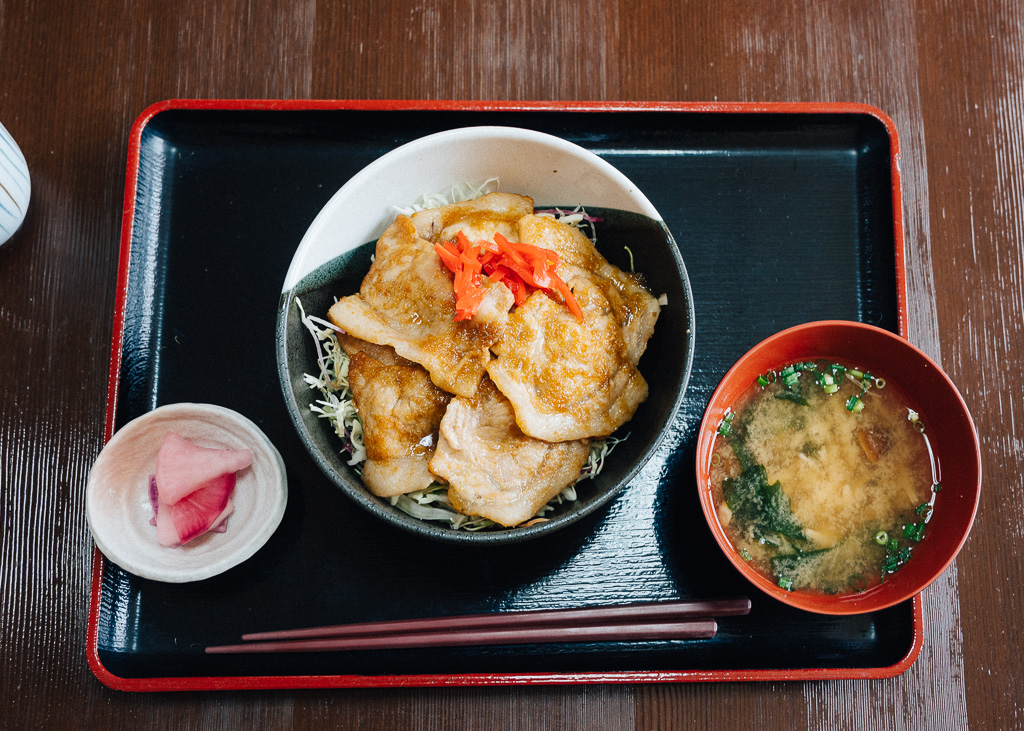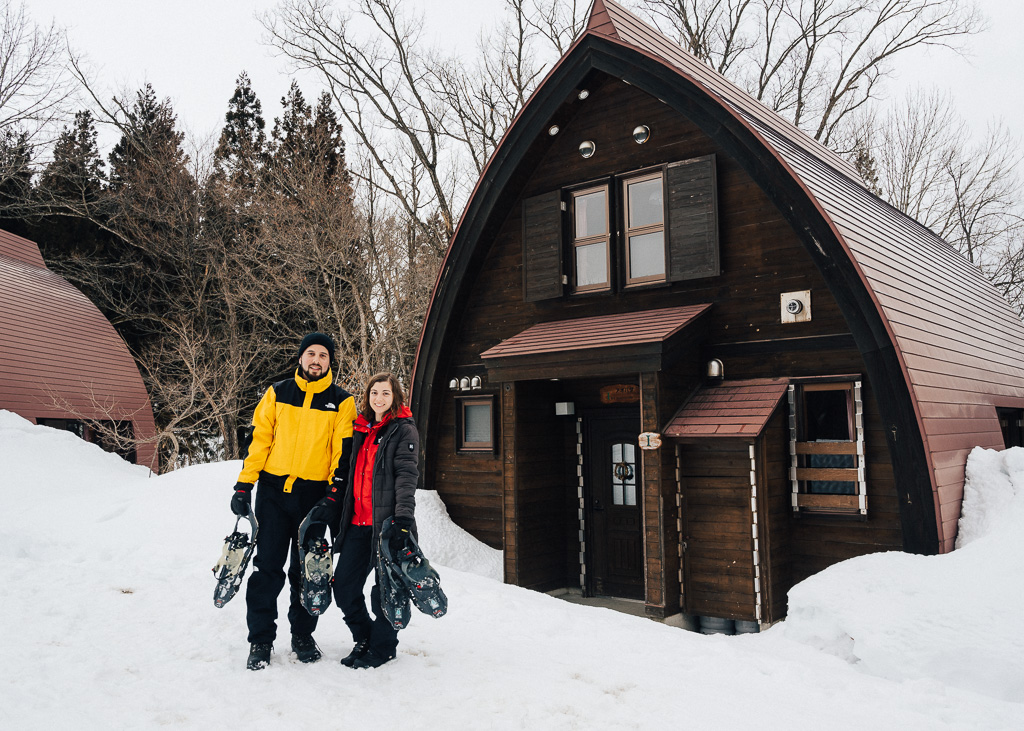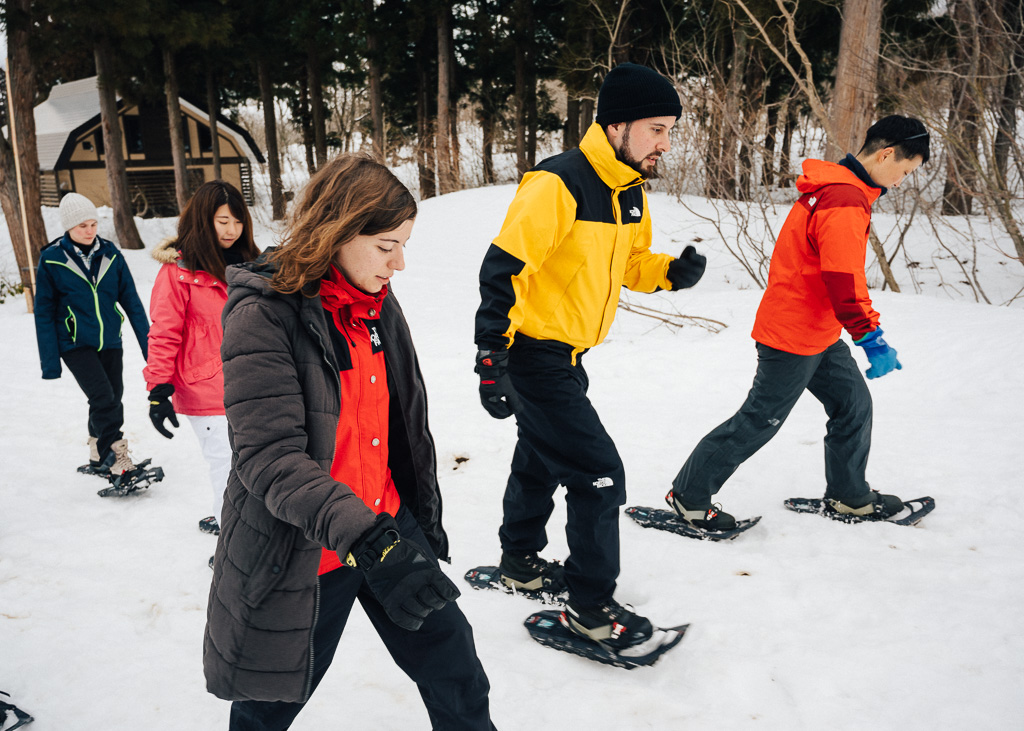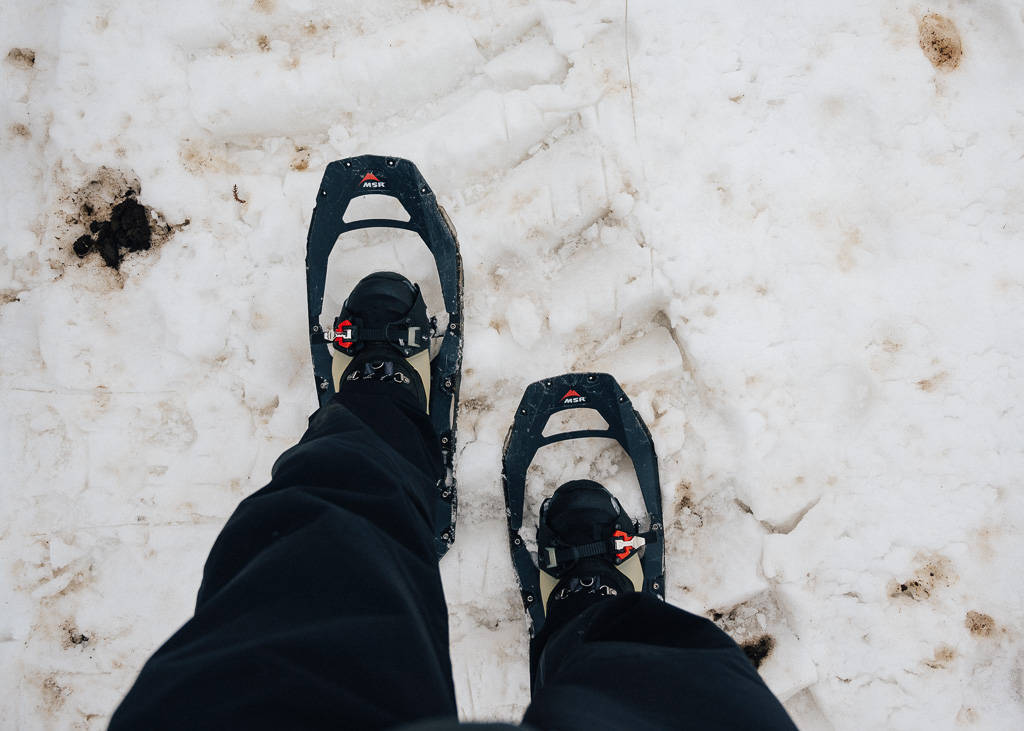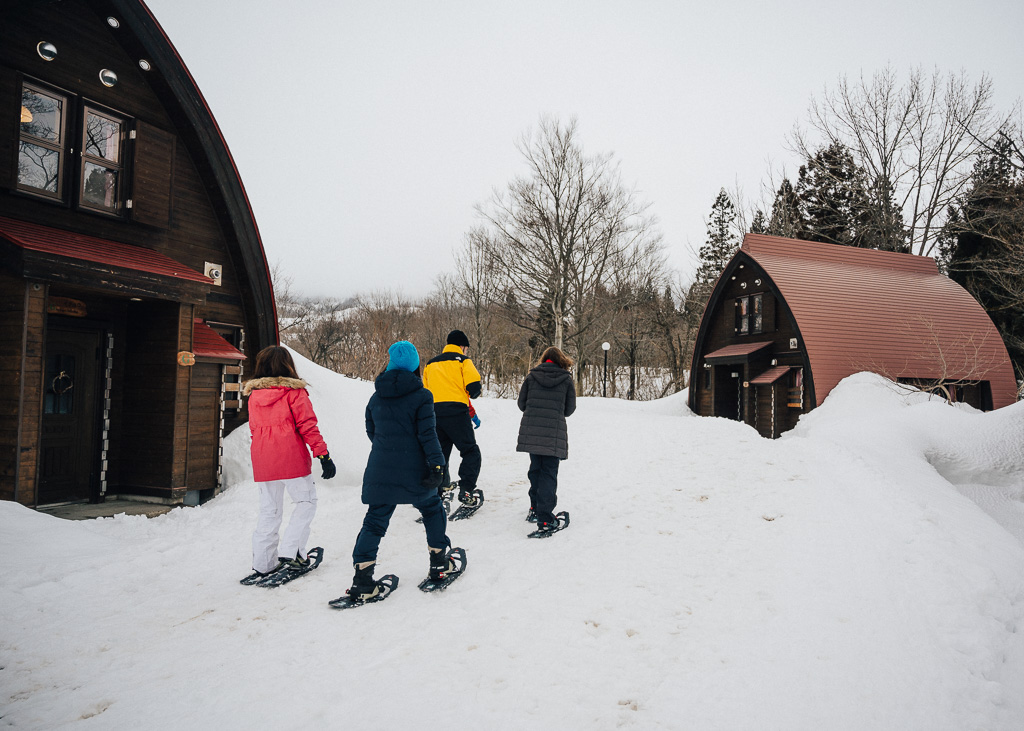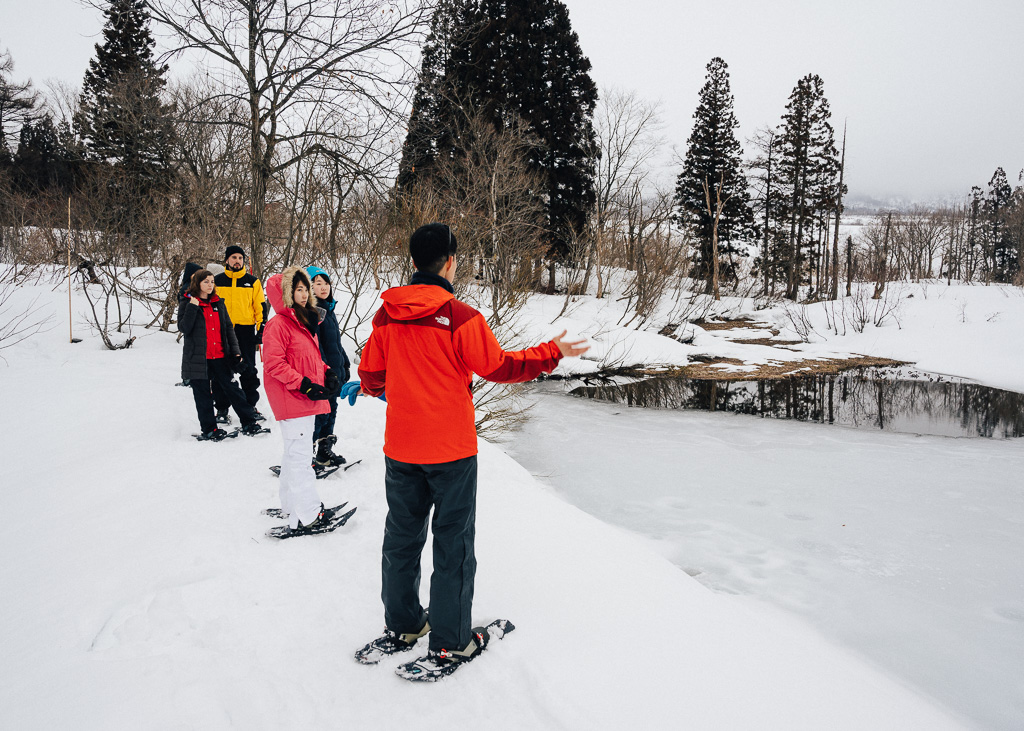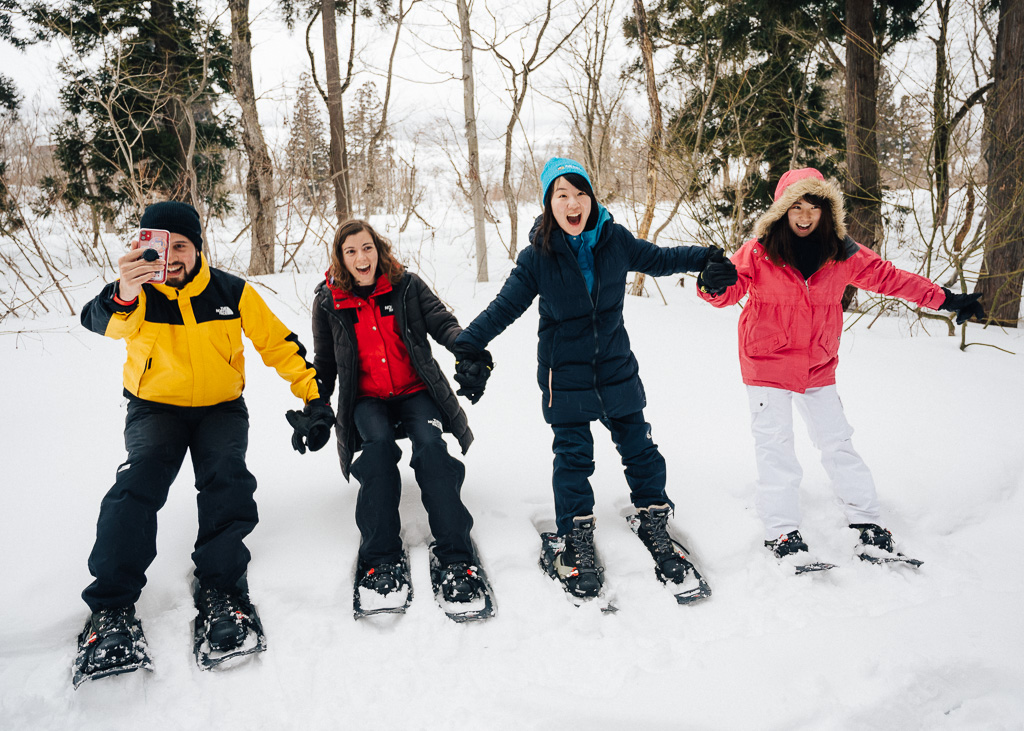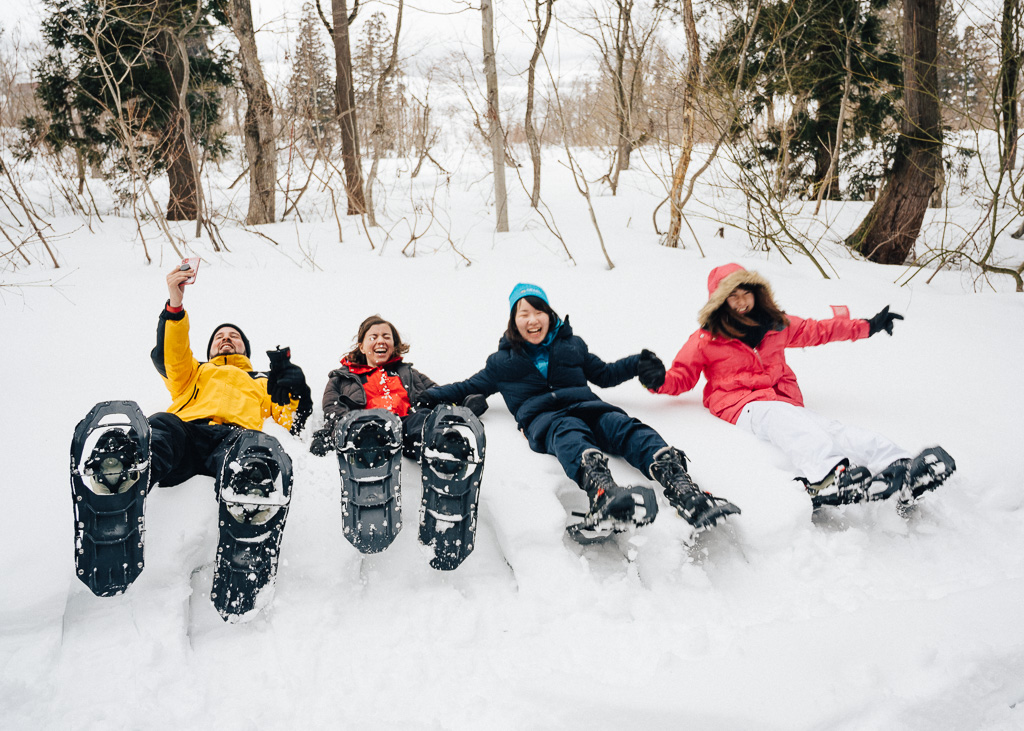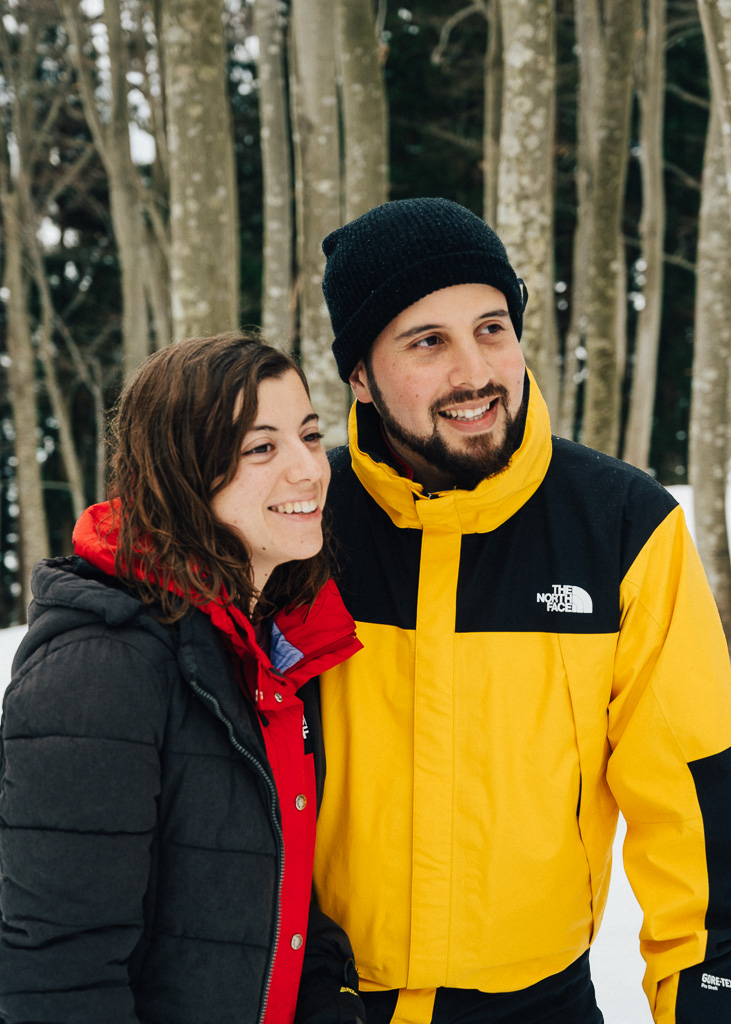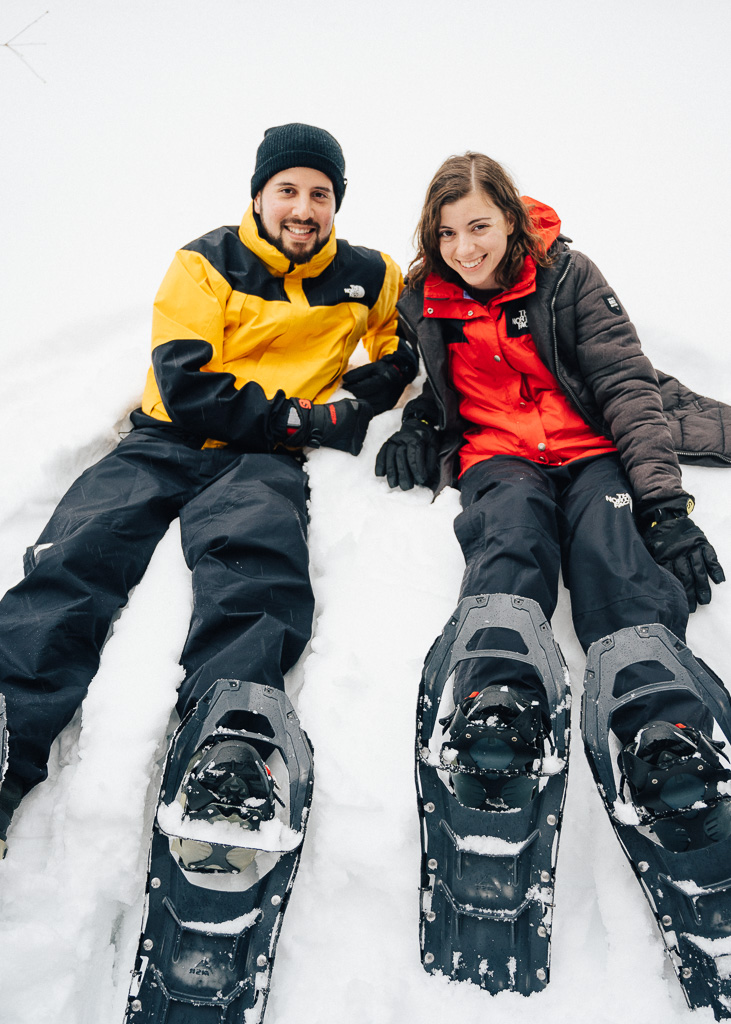There will come a time in a person’s life when the rush of adrenaline to the body overcomes their common sense. Sitting at the top of the ski run of Togari Onsen Ski Resort on a fat wheeled mountain bike, getting my first taste of snow cycling, was that moment for me. I hadn’t been on a ski slope nor downhill mountain biking in over 20 years. But somehow, seated on this sturdy bike, I felt invincible, and the long broad slope below me tempted my pride. “Let’s ride,” I whispered under my breath, kicking off the soft snow and hurtling myself down the hill.
Snow Cycling at Togari Onsen Resort
A week ago, I had never even heard of snow cycling, let alone imagined myself doing it. It turns out there is only one resort in Japan where you can actually try this, Togari Onsen Ski Resort in Iiyama City, Nagano. Iiyama has lived in the shadows of nearby Nozawa Onsen as a winter sports destination for decades. Recently, however, it has been transforming itself into a popular destination for both foreign and domestic adventure lovers.
I arrived in Iiyama a day earlier, accompanied by fellow Voyapon contributor Maria and her boyfriend Hernan, an accomplished travel blogger. Our itinerary included the bucket list item, “dining in an igloo under the stars,” which we successfully accomplished at the Iiyama Kamakura Village the night before. Today, we would be sampling two of the many winter activities available in Iiyama: snowshoeing and, of course, the famous snow cycling.
Joining us on our cycling adventure today were two friends from Tokyo and two ski instructors from Argentina who were working at nearby Madarao Ski Resort. Together, we signed in, picked up a helmet and bicycle, and received a quick briefing from our instructor. Then, we were given about 30 minutes at the foot of the slope to get comfortable on our bikes and learn to apply the brakes correctly.
The bicycles used at Togari Onsen Ski Resort are not standard mountain bikes, but the fat tire variety. These bicycles have tires that are up to 4 inches wide and left a bit soft, giving them the uncanny ability to maintain a grip even on icy surfaces. If you can ride a normal bicycle, chances are you can ride one of these snow cycles.
We rode around until we felt confident with our balance and braking, then headed for the lift. Every third chair on the lift has a rack mounted on it which the bicycle can be suspended from. There is an employee at the lift responsible for mounting your bike, which he does on the chair behind the one you ride on. At the top, another employee removes the bicycle and hands it to you after you exit the lift. It couldn’t be more convenient.
There are three slightly different tracks on the mountain for snow cycling. There is the broad 800 meter downhill slope where the only skill required is to point your wheel downhill and go (well, not really that simple, but you get the idea). There is a technical course through a grove of trees, which you enter about two thirds the way down the downhill slope. And there is a skills course which has a few moguls and a bit of a slalom, which you enter about halfway down the downhill slope. All three courses are reserved strictly for snow biking, so you need not worry about dodging wayward beginners on skis or snowboards on the way down.
On the downhill slope, you can either run loose and really fly down the hill or ride the brakes and control your speed. As we were all beginners, we rode a bit more cautiously, but our ski instructor friends caught on quickly and got a little more speed than the rest of us.
The second run was the technical course, and it was indeed quite tricky. The path through the trees is quite narrow, and even the entrance to the course was the site of a couple of minor spills. If you are a real mountain biker, however, you’ll appreciate this scenic detour through the cedar forest.
The third run was the skills course, and it was probably the most fun of the three. It started on a level side road so you could pause to admire the view before plunging down into the valley again. Along the way, there were small moguls on which a capable rider might be able to catch some air on, followed by a switchback before rejoining the downhill course near the bottom.
We had time for a final run, so I was finally able to put down my camera gear and get serious about riding. In the back of my mind, I heard my wife’s voice reminding me not to get myself killed, but even that faded away once I sat at the top of the ridge, taking in the view below me. Needless to say, I did not die on that day, but if I did, it would have been an excellent day to do so.
Hot Meal, Hot Bath at Yutaki Onsen
A half-hour later, we sat around a table at Iiyama Yutaki Onsen, swapping stories, resting our tired bodies and warming up with a hot meal. Yutaki Onsen is a local favorite, both as a place to get a reasonably priced delicious meal and for a soak in its hot springs baths. There are indoor and outdoor facilities here, the latter with an outstanding view of the snow-capped mountains as you soak your cares away.
The popular lunch choice of our group was the big tonkatsu (fried pork cutlet) set, while I diverged and tried the grilled miyuki pork bowl. Both were equally satisfying. The gents from Argentina stuck around to relax in the onsen, but the rest of us had an appointment to keep with a local guide waiting for us up the mountain at Mori no Ie.
Mori no Ie: Winter Wonderland
Though you would never know it without making a strenuous climb up to the ridge of the mountains, Iiyama city is barely 25 kilometers from the Sea of Japan. During the winter, the moist, cold air sweeps down from the Asian continent, dumping several meters of snow first on the Northern Japanese Alps, then on the mountains above Iiyama. For this reason, this area reliably gets a deep blanket of snow, and even in a bad year like this one, there was significantly more snow on the ground than just a few kilometers south at the Kamakura Village. Here in this sweet spot of snowfall sits Mori no Ie, on the Nabekura Plateau.
Mori no Ie is a sort of adventurer’s wonderland, centered around a lodge where you can rent equipment for outdoor activities, hire a guide, or even rent a secluded cottage for an overnight stay. I had the pleasure of staying overnight here during an earlier visit to Iiyama, but this time, we were here to do some snowshoeing.
Our guide Yukiko-san gave us some quick instructions on how to put on snowshoes, checked they were securely fastened to our feet and taught us how to walk properly in them. Then we were off on a short hike to the beech forest, a favorite destination at Mori no Ie in any season.
As we walked, Yukiko-san described flora and fauna of the area, identifying animal tracks in the snow and describing the various types of trees that make up the forest here. We passed a frozen pond which was actually a man-made pond used to irrigate the rice fields down in the valley during the summer months. We had a foot race on snowshoes to see who was the fastest. Passing an area of pristine snow, Yukiko-san encouraged us to “fall in,” which everyone except I did (well, someone had to take the pictures!).
When we reached the beech forest, we realized what a magical place this was. Though the trees were bare in the winter, their smooth white bark stood in contrast to the cedar forest surrounding them. In the spring and summer, the green leaves would be slightly translucent with the sun shining through them. In autumn, the leaves would turn to gold before falling to the ground, creating a shimmering blanket at the feet of the trees.
We had to cut the hike a bit short to get back to Iiyama station to return our rental clothing and catch the bullet train back to Tokyo. Once again, I felt reluctant to leave such a beautiful place as Iiyama, with its gentle people and delightful foods. I took consolation in the fact that Iiyama is indeed a short trip from Tokyo, and my family and I could easily sneak away for a long weekend in Iiyama nearly any time we wanted to. As I write this article, my mind drifts back to the scenes of the beech forest, the rush of adrenaline as I careened downhill on a snow cycle, and the hospitality of our hosts that was nothing short of incredible.
How to Get to Iiyama and Togari Onsen Ski Resort
Iiyama city can be reached by Shinkansen (bullet train) from Tokyo in under 2 hours using the Hokuriku line. From Iiyama Station, you can catch a shuttle bus to Togari Onsen Ski Resort or call a taxi. Details are available on the Togari Onsen website in English.
There are 1, 2, 4, and 6-hour rates for snow cycling/lift ticket packages and special discounts available at times as well. Check the English page on the resort website for more details.
To book a snowshoeing tour, visit the Shinshu Iiyama Tourism Bureau website or email them at info@iiyama-ouendan.net .
Sponsored by Shinshu-Iiyama Tourism Bureau (Nagano Prefecture)


